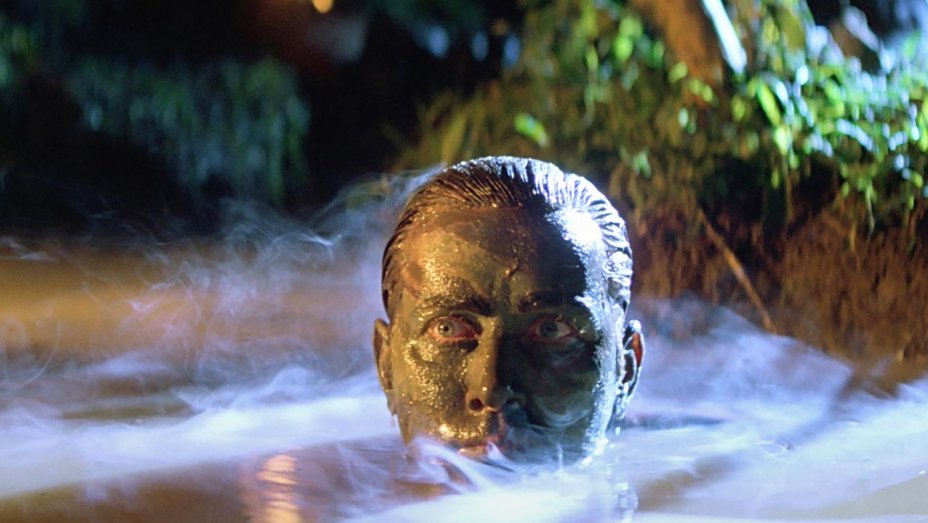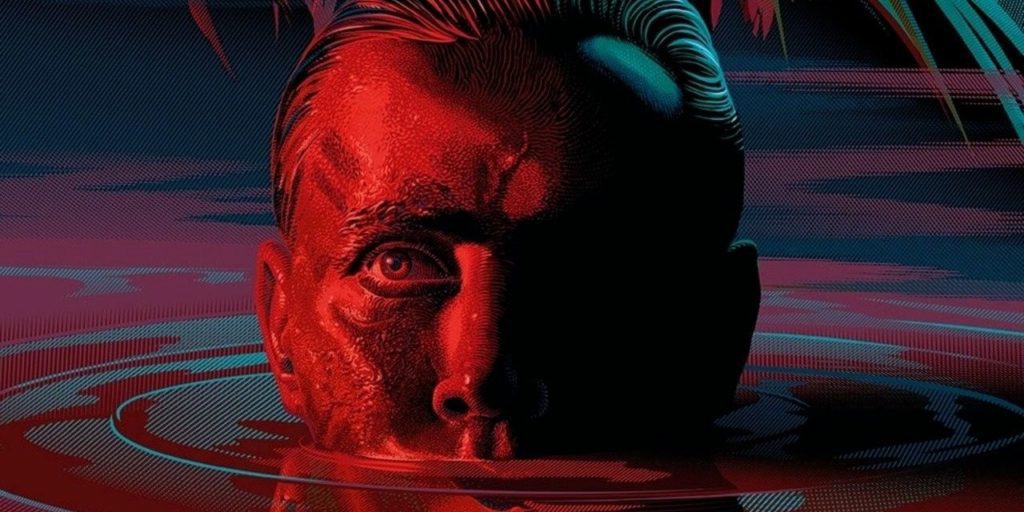Our motto: Apocalypse Now. No this isn’t the tagline for Brexiteers and Trump supporters’ ongoing campaign for fascistic values, it is the integrated title card that appears two hours into (dependent on the cut) — the end of a journey into Kurtz’ dark heart of a jungle nirvana — the greatest war movie ever made. A showcase to the vanguard vision of Francis Ford Coppola’s rule shattering of war on film/film on war. 2019 marks the 40th anniversary of the opus of a director who has The Godfather films in his repertoire. This celebration sees him revisit the million-foot-long film reel to create a Final Cut, even though he brought us the Redux in 2001. Not quite as many cuts as Blade Runner but I welcome a new reflection on perfection. Whilst I’m speaking in the contemporary industry-standard hyperbole that aggrandizes any bland attempt at adaptation or speaks slander to intellectualism on-screen, Apocalypse Now is an “absolute” classic; an artistic endeavor that threatened homes, careers, lives, to portray the horror of humanity and the grotesquery of war. It is absolute in its realization. It is classic in its medium. It is maniacal, trippy, terrifying, hilarious, prescient, timeless and (mostly) authentic. It is its own legend.
Joseph Conrad’s Heart of Darkness is at once one of the most critically lauded novels of all time and one of the most maligned. A journey from the smoke plumes of industrial 18th century London into the depths of the African continent blackened by white man’s virile claims and colonialism. It’s themes of empire, race, nativism, greed, morality, enslavement, etc., are argued by some to be scathing satire and by others an overtly racist account of the white consciousness that bleaches the native voice down to “Yes, sir.” After a recent reread (or retelling as this time, I listened to Kenneth Branagh’s magnificent audiobook version — showing the prose’s malleability for adaptation) I think it’s both. I believe Coppola saw this dichotomy. Therein was the first of the auteur’s outlines in the portrait of men in uniform following sadistic orders of a superior officer with a “Yes, sir.” The rest was a not-too-distant history that wounded American patriotism and slaughtered Vietnamese civilians.
This transformation was a tailored fit to explore similar issues that could have the West witness their haloed reflections that cast a horned shadow. Like all film, especially one that took sixteen months to shoot, Apocalypse Now was a magnanimous effort of collaboration which saw screenwriting, cinematography, acting, production design, editing and all other facets of filmmaking coalesce under the monomaniac direction of Coppola – who was rewriting daily to deal with set destruction by storms, actor’s illnesses/addictions, the Philippine military’s need of their borrowed choppers, and so on. I’ll try not to step on the toes of Eleanor Coppola’s extensive documentation that’s brilliantly pieced together in Hearts of Darkness: A Filmmaker’s Apocalypse in delving too deep into the bibliography of trivia and travails that surround such a mammoth production. I will say it is perhaps the most scrutinous and humbling behind-the-scenes documentary around, including Lost in La Mancha and Costa Botes making of The Lord of the Rings trilogy, that truly adds to the appreciation of what’s possible in cinema.
As film audiences become ever more involved in the processes of their favorite movies, from having an educated say in the Best Cinematography category to thinking themselves better casting agents than, well, casting agents, a deeper appreciation must surface for Apocalypse Now as films just aren’t made like this anymore. We’ve all seen our favorite actors in green spandex or watched the most serious of thespians crack up on a blooper reel but the mystique of movie remains intact for something like Apocalypse Now or Lawrence of Arabia – which I consider being of a similar scale – so I think we must acknowledge that films rarely can be made like this. For good and for ill, but nonetheless, there aren’t many sequences that are etched onto the brain like the helicopter assault on the fictional Vinh Dinh to Wagner’s Ride of the Valkyries. It’s iconic, not just within film but the zeitgeist. It’s been riffed upon, satirised and the subject of pastiche and homage (most effectively in Sam Mendes’ Jarhead when it’s played to rile up young marines who chant, bellow and scream “Get some” in hyper-masculine tones as Vietnamese villagers are but worms to a horde of missile-toting hawks) many times, with Wagner’s symphony becoming as synonymous with the film as Johan Strauss II’s Blue Danube Waltz is with 2001: A Space Odyssey.
One of the many pieces that help elevate Apocalypse Now from being just another festival of explosions is Willard’s (Martin Sheen – who does not get enough credit for this role) haunting narration throughout. It has the observant philosophy of a poet physically bound to Vietnam with only the conflict to sustain his wired eyes. This ethereal nature in the narration is due to the writing of war correspondent and inadvertent whistleblower of all horror in Nam, Michael Herr, author of the seminal nonfiction book, Dispatches. The authenticated rambling of Sheen’s strained soldier as the burning bridges melt in front of his and his comrades of the PBR (Patrol Boat, River) anchors the surreal scenery that allows you to question who you are unlike working in a factory in Ohio. Every person Willard meets feels like they could have a film made about them. There are the heavy hitters like Lieutenant Colonel Kilgore (Robert Duvall oozing charisma) who stands stolid as he swoons over the smell of napalm and six-foot swell. There’s also the black soldier cum Black Panther who blindly fires off a grenade toward the foreign screams across the other side of the aforementioned burning bridge that’s symbolic of the political and personal fallout all who witness it will feel. Characters add density to the screen because they’re all at once heroes, villains, and damsels in distress. Dispatches pages are proof of this. During my reading, I felt the breadth of humanity (and there can be no inhumanity without humanity) every time I flicked the paper. The disdain you feel for an overt racist, bigot, moron evaporates when you read that he offered his flak jacket to a journalist because they didn’t sign up to be there. This abundance of character fills each frame of Apocalypse Now with possibility. If Prose is the artistry of presenting a story artfully, and poetry the blossoming of emotion as prickly as a desert cactus, then this war on film isn’t Vietnam — as Coppola claimed — but a vehement bombardment on the spirit, body, and mind. The last of which exemplified in my existential dread at Willard’s surf Pro crewmate, Lance B. Johnson (Sam Bottoms) dropping acid as the PBR arrives at the battles of the bridge as it fizzles and glows like a lost ember against the black desolate night. A scene so vivid to watch sober is the portal of empathy to all the soldiers who saw the atrocities their country committed with their cerebrums drenched in LSD.

On the point of psychedelics, the use of The Door’s lament ‘The End’ is a reoccurring sonic motif of sorts. Fittingly, as it excretes apocalyptic acceptance with its melancholic, mind-altering sounds and Morrison’s macabre lyrics. Though its use has been altered slightly for the Final Cut. In comparison to the Redux, in particular, the song still scores the opening but not all of the ending. What is to me one of the great uses of timeless music with a very particular zeitgeist time stamp, the sequence of Willard’s predatorial hunting of Kurtz during the rain-lashed buffalo sacrifice ritual is actually cut short for a paradoxical full stop that could be construed as more final but the less grandiose finale. Herein lies the reminder against authorial tinkering. But that I got to witness one of my favorite films on a flat screen in 4K with speakers that churned my marrow as wounded women (the few that are anywhere in the penile war/film) wept and explosions roared like Cerberus during a mental breakdown at keeping the influx of Hell’s denizens in order.
In the stage version of Heart of Darkness that I recently saw in Liverpool, the production team took the socially aware route where Marlowe was a female private detective from the most lucrative continent: Africa. She’s set on a journey across a self-cannibalizing Europe (post-Brexit?) ruled by pale savages as she tries to find the mysterious Kurtz. Inventive right? Flipping almost all the racist and socio-political overtones to reflect a western world that’s torn itself apart. But during the show, which uses minimal props and costumes – creating scenery through live camera trickery; like adding backdrops of the wasteland as an actor holds a steering wheel as another film – there are jarring cuts where the haunting moods set by performance and multimedia magic fade into the light. Breaking character, the cast of five become themselves, arguing about how you adapt such a classic text that’s been retold so many times, for the currently polarised times. Before you ask where I’m going with this as you thought this was an article about the filmic version of the Vietnam war, I will tame this tangent. During the meta outbursts (of imitating the dog’s production and not mine in this article), Apocalypse Now is cited several times, from it being ‘the greatest adaptation of a classic text ever’ to ‘maybe let’s just have the audience watch it as we can’t top it’ and right through to the comparison with Brando’s Kurtz. Even at the peak of experimental contemporary art in this media-packed meta production, Apocalypse Now was at the forefront of references toward the transformation of a text that surpasses the original version because of how it’s mutated to reflect us, in the now. Funnily, they didn’t want to give Kurtz stage time because of the inability to resurrect Brando.
During the film, Brando feels like the ghost of himself as he reels off TS Elliot and myopic machinations before digital resurrection/restoration was ever possible. The method actor who was famously underprepared for the transcendental role of Kurtz is still an ethereal presence that hypnotizes. It’s like listening to the intrepid philosophies of Alan Watts mutated by all the misanthropic characters of Alan Moore’s graphic novels. The horror in his final words is the horror. But that he, along with Sheen and the rest of cast, Coppola, and the rest of the crew, will always be caged amidst the tigers and arrows of the jungles and worse yet, the commands and ego of commanders and superiors for our artistic interpretation is antithetic to horror.
A more fitting end to a meditation on Apocalypse Now I can only give to the messianic Morrison:
Can you picture what will be?
So limitless and free
Desperately in need
Of some stranger’s hand
In a desperate land



